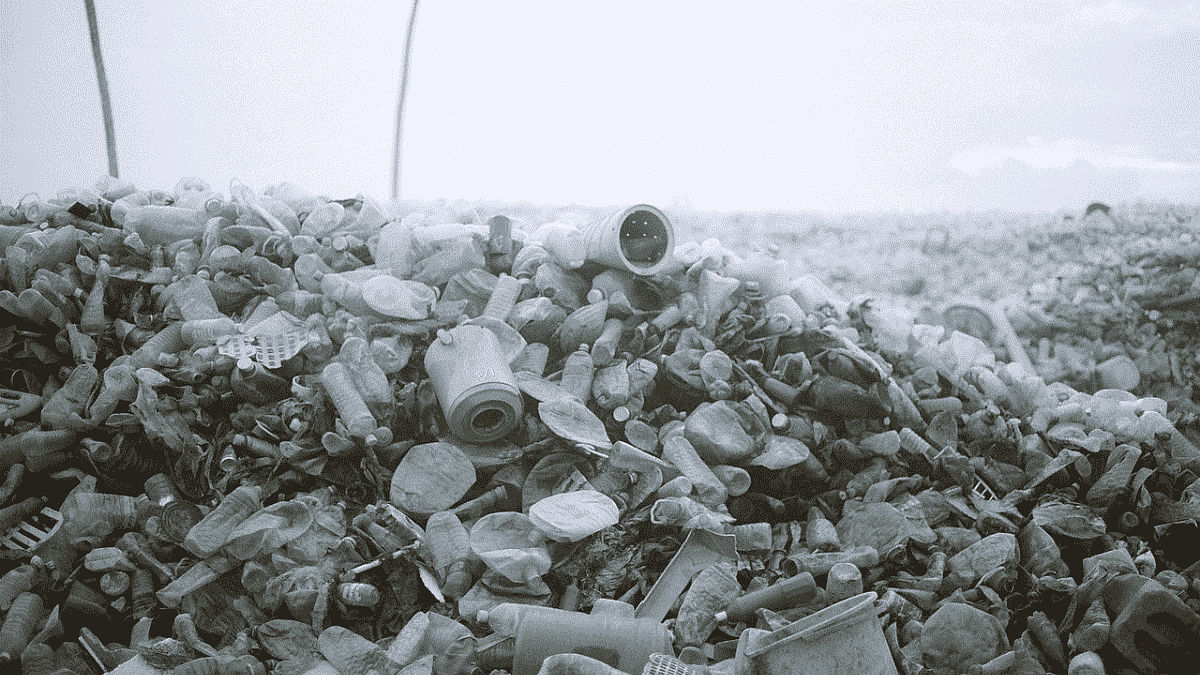New Delhi: After infiltrating the Mariana Trench, Mount Everest, blue whales and even spinach, microplastics have now found their way to the testicles of humans.
Researchers from the University of New Mexico (UNM) have detected alarming quantities of microplastics in the testicular tissue of humans and dogs, adding to growing concerns surrounding the potential harm they pose to human reproductive health.
Led by Xiaozhong ‘John’ Yu, the UNM team discovered that the average concentration of microplastics in human testicular tissue was 329.44 micrograms per gram of tissue — nearly three times higher than in dogs. Unsettlingly, it was significantly higher than the levels found in human placentas in previous studies.
Research showed that the most prevalent polymer found in both human and canine tissue was polyethylene, which is commonly used to make plastic bags and bottles. For the study, the UNM team tested 23 human testes and 47 testes from pet dogs.
While inspecting canine tissue, the UNM team also found that higher levels of Polyvinyl chloride (PVC), a polymer used for various industrial and municipal implements, was linked with a lower sperm count. The findings were published on 15 May in the peer-reviewed journal Toxicological Sciences.
Yu studied the impact that chemicals in the environment have on human reproductive health. Noticing a fall in male reproductive potential, the UNM team sought to uncover if increasingly ubiquitous microplastics were to blame.
Previous studies revealed the deleterious effect that heavy metals, pesticides and endocrine-disrupting chemicals have on the reproductive health of humans.
Microplastics — pieces of plastic no more than 5 mm in size — enter natural ecosystems when synthetic clothing fibres, paints, tyres, and other parent plastic material is whittled down. They are known to disrupt and degrade environments as they are not biodegradable.
Primarily, wind and water spread microplastics, indirectly introducing the harmful chemicals from them into living organisms.
Last year, a peer-reviewed study published in the journal Frontiers in Plant Science, suggested that “overall plant growth and development” is negatively affected in plants exposed to microplastic stress.
While, a paper published in the International Journal of Molecular Sciences, found that such microplastics not only altered the cognitive function of the mice, but was also able to breach the otherwise impregnable blood-brain barrier.
Also Read: Why did Beethoven lose his hearing? A lock of hair holds the key
Microplastics & their human homes
In February, Matthew Campden, another professor at UNM who had been probing human placentas for microplastics, also published the striking findings of his team in the journal Toxicological Sciences.
The researchers had pioneered an analytical method to measure the amount of microplastics found in the human bodies.
The procedure involved converting the tissue of interest (in Campden’s case this was placenta tissue) into a matter via a process known as saponification, wherein certain chemicals are utilised to digest the fat and protein present in the tissue.
The remnant mass is introduced into an ultracentrifuge. Post centrifugation, a pellet of plastic is left behind at the base of the tube. Then, by a process known as pyrolysis, the plastic pellet is subjected to a burning hot temperature of 600 degrees Celsius.
As the pellet starts fuming, gas emissions are analysed using a mass spectrometer to pinpoint the exact plastics present in the human tissue. Using this method, Campden found microplastics in all the placenta samples that he tested.
“If we’re seeing effects on placentas, then all mammalian life on this planet could be impacted. That’s not good,” he had told interviewers at the UNM Health & Health Sciences Newsroom.
Yu used the same analytical method that his colleague UNM Campden devised to determine the types of microplastics he uncovered in human and canine testicular tissue.
“At the beginning, I doubted whether microplastics could penetrate the reproductive system,” Yu said. “When I first received the results for dogs I was surprised. I was even more surprised when I received the results for humans.”
“The plastic makes a difference — what type of plastic might be correlated with potential function,” Yu said. “PVC can release a lot of chemicals that interfere with (sperm production) and it contains chemicals that cause endocrine disruption.”
Yu, however, batted for more research to ascertain how these microplastics might affect sperm production in humans. “We have a lot of unknowns,” Yu said. “We need to really look at the potential long-term effect.”
(Edited by Tony Rai)
Also Read: Microplastics, pollutants in Cauvery river causing growth defects in fish, says IISc study

